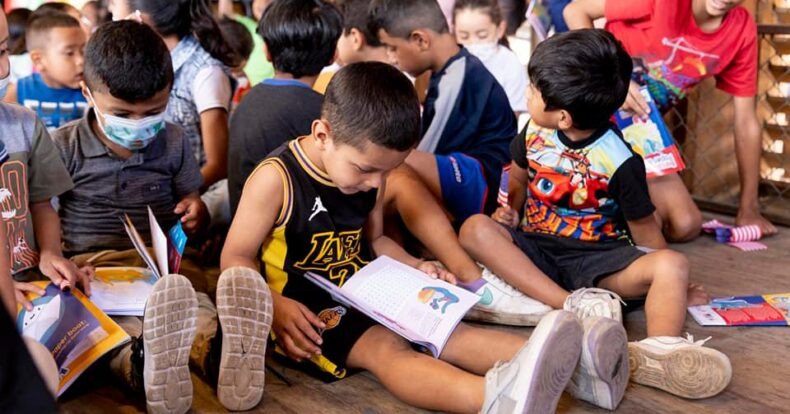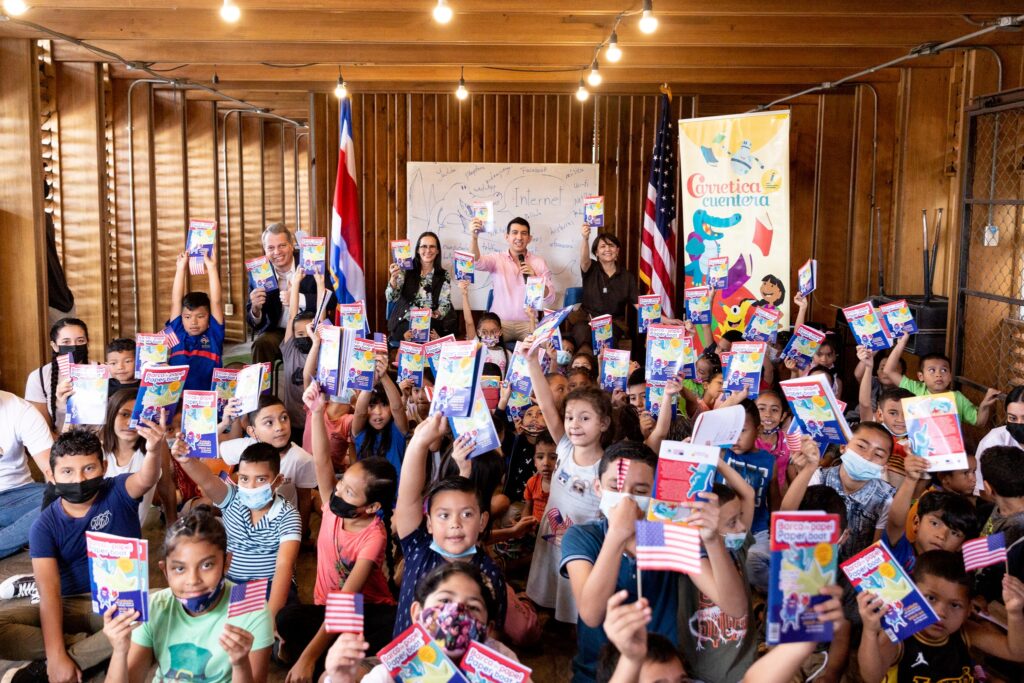Costa Rican Children and their Access to Reading

photo: Carretica Cuentera
Costa Rican children and their access to reading
Generalized Demotivation towards Reading and Writing
In the last PISA test report (tests conducted by the OECD as an educational benchmark among participating countries), Costa Rica is the country in the region with the lowest long-term performance in the area of reading. The latest reading survey conducted in Costa Rica (2011) shows that the national average of books read during 2011 was 1.7, per person.
The State of Education 2021 shows alarming data. Only 16 percent of Costa Rican schools have a library. The vast majority are concentrated in the Greater Metropolitan Area. In other words, there is truly insufficient coverage and a significant percentage of children who do not have access to a library in their schools, let alone access to children’s books at home. The approach to reading becomes then something merely academic and even a real luxury for Costa Rican children.
Alberto Barrantes, journalist, young leader and reading lover, affirms that “this undoubtedly has an impact on reading and writing skills, as the State of Education also points it out. In fact, to date, more than half of the schoolchildren pass from primary school to secondary school with very low levels of reading, reading comprehension and mathematical reasoning. Everything is interrelated and this tells us that there is an urgent need for a change of direction in what is being done, what is being taught, how it is being taught and what it is being taught for.”

What is being done to Solve the Lack of Access to Reading in Costa Rica?
In spite of these deficiencies, there are different efforts made in the country. During the administration of Carlos Alvarado, law number 10025 for the Promotion of Reading, Books and Libraries was signed, which seeks to promote the habit of reading.
On the other hand, in 2013, the Ministry of Public Education created its Reading Promotion Policy. This document contains a series of guidelines on how educational institutions can foster reading habits among students. However, the policy lacks specificity, goals and dates for implementation.
In the same vein, the National Library System (SINABI) established its Action Plan for the Promotion of Reading in Costa Rica’s Public Libraries. This is subject to the Ministry of Culture. Despite its success, it is limited to the scope of action of this institution.
La Carretica Cuentera
Other projects formed by public-private partnerships are also trying to counteract this scourge. One of them is the project launched by Alberto Barrantes, La Carretica Cuentera.
La Carretica Cuentera was born in 2016 with the firm purpose of giving a taste for reading and creative writing from childhood. They work with digital and printed materials with stories with open endings so that girls and boys are the ones who finish each of these stories.
“We work on environmental education, financial education, health and nutrition, peace education and bullying prevention. The purpose is to make reading a process of active participation, problem solving, critical thinking, where the child is the center of the learning process,” says Barrantes.
“We aim to transcend the academic approach that dictates that reading is only to pass the Spanish subject and demonstrate that reading provides tools for life. To the extent that they are conceived as tools for hope and freedom, we will have citizens who are more aware of the environment in which they live in order to transform it and turn it into a more supportive and humane space.”
The organization is open to all volunteers and book donors who wish to collaborate with the project.
References
Author: M. Barrantes for Sensorial Sunsets in collaboration with Alberto Barrantes, founder of Carretica Cuentera @carreticacuentera www.carreticacuentera.com
Read more about this topic
Navigate articles





